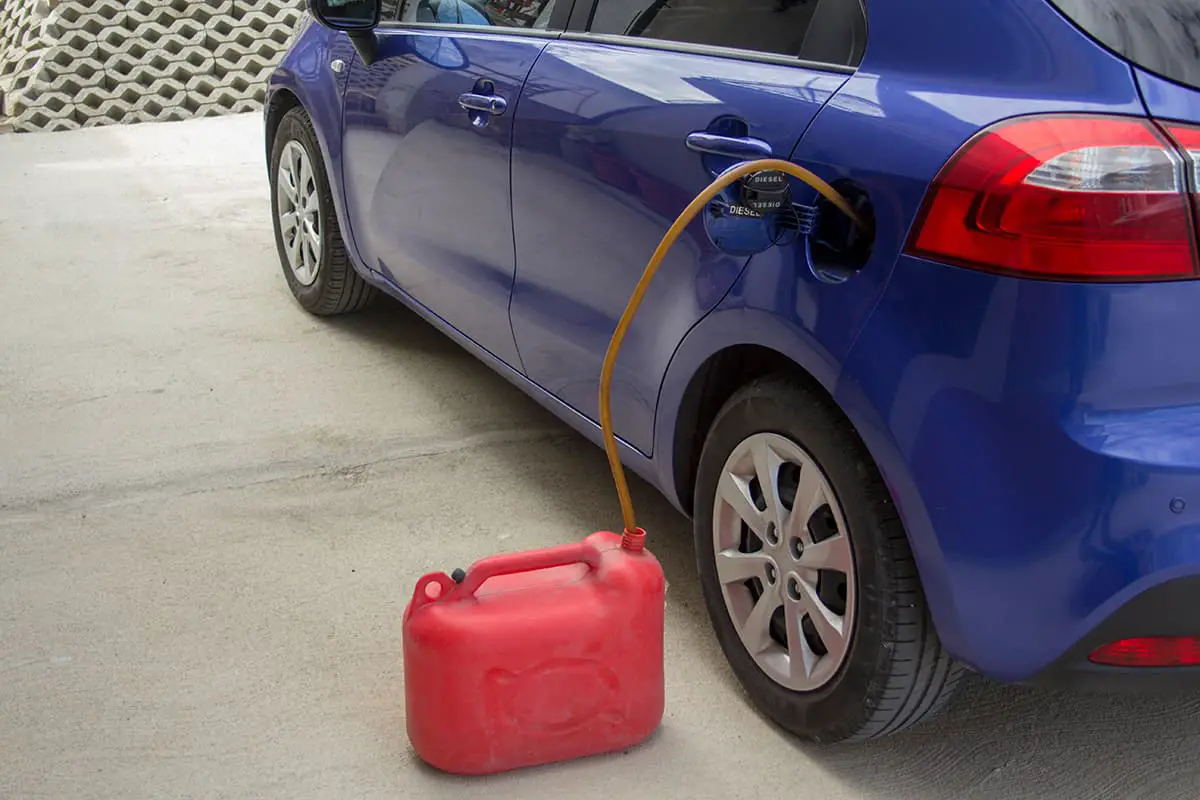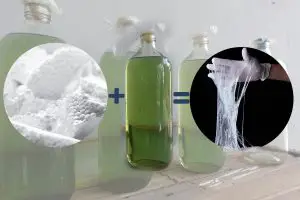With gas prices seemingly increasing annually, it’s no surprise that some people might think about transferring gas from one vehicle to another. This used to be a straightforward task, but advanced automobile technology has made it significantly more challenging. If it’s “only” difficult, then surely it’s doable?
Yes, it is possible to siphon gas from brand-new cars, but it will take some doing. Screens, valves, and anti-siphoning mesh in the fuel tank are just a few examples of the fuel-theft prevention devices installed on many newer vehicles.
So, how exactly do you siphon gas from a new car, and, more importantly, is it legal? I’ll address these questions and more in the following sections.
What Is Siphoning Gas?
Siphoning gas involves using a hose or tubing to transfer fuel from one container to another without using a pump. It is the “art” of carefully transferring gasoline from one container to another without using a pump or any fancy equipment. Imagine creating a vacuum with your mouth and coaxing the fuel to flow uphill against gravity, all while avoiding the bitter taste of gasoline.
It’s a skill that requires patience, precision, and a bit of courage, as one wrong move could result in a mouthful of gas or a messy spill. But for those who master the art of siphoning gas, it’s a useful trick that can come in handy in a variety of situations.
Can You Siphon Gas Out of New Cars?
In the past, siphoning gas from a car was a simple process. You could easily insert a hose into the fuel tank and transfer the gas to another container. However, newer cars have a rollover valve or anti-siphon mesh installed, making it more difficult to access the fuel tank. The rollover valve helps to prevent pressure from building up inside the fuel tank during normal operation and also prevents fuel from escaping in case of a collision.
Although siphoning gas from newer cars is more challenging, it’s not impossible. To siphon gas from a newer car, you need to use a narrow ¼-inch diameter plastic hose, a gas can or large container, a siphon pump (if desired), and a thicker hose. You’ll need to cut the hose at an angle to create a narrow end that can be inserted into the fuel tank.
To bypass the rollover valve, you’ll need to use a pushing and twisting motion while inserting the hose. Once the hose is inserted, you can attach it to a thicker hose and a siphon pump if desired. You can then pump the gas out of the tank into the gas can or container positioned lower than the car’s fuel tank. The gas will flow due to gravity until the tank is empty or you lift the hose higher than the gas tank.
Is Siphoning Gas Legal?
The legality of siphoning gas can vary depending on the specific circumstances and location. In some areas, siphoning gas may be considered theft or illegal, while in other places, it may be permitted for certain purposes, such as emergency situations or maintenance tasks.
Before attempting to siphon gas, it’s important to research the laws and regulations in your area and obtain proper permission if necessary. It’s always better to err on the side of caution and avoid any actions that could result in legal trouble or harm to yourself or others.
Dangers of Siphoning Gas
Siphoning gas may seem like a harmless act, but there are several real risks.
1. Toxic fumes
Gasoline emits toxic fumes that can cause dizziness, nausea, headaches and even death in high concentrations. Siphoning gasoline can expose you to these fumes, which can be particularly dangerous in enclosed spaces.
2. Explosions
Gasoline is highly flammable and can ignite easily. If gasoline comes into contact with an ignition source like a spark or flame during siphoning, it can cause a fire or explosion.
3. Chemical exposure
Gasoline contains harmful chemicals such as benzene, toluene, and xylene. Exposure to these chemicals can cause skin irritation, respiratory problems, and other health issues.
4. Legal consequences
Siphoning gas from someone else’s vehicle is illegal and can result in criminal charges and fines. Unless you get consent from the person supplying gas to you, then you’ll have to find another way to get gas.
When Would You Need to Siphon Gas?
There are certain situations where siphoning gas may be necessary and legal if you receive consent from all parties involved:
1. Emergencies
Siphoning gas can be useful in emergency situations, particularly if you find yourself stranded with an empty gas tank. If there are other vehicles nearby, you can siphon gas from one of those vehicles to get enough fuel to reach the nearest gas station or other help. This can be a lifesaver if you’re in a situation where there’s no immediate access to help, such as in a remote area or during a natural disaster.
2. Transferring fuel to another container
If you don’t have the energy to drive to the gas station to fill up your lawnmower or generator’s fuel tank, you can siphon gas from your own car. To siphon gas, you need two containers and a hose or tubing that’s long enough to reach from one container to the other.
3. Cleaning purposes
Siphoning gas can be useful for cleaning purposes when you need to remove old gasoline from a vehicle or equipment before refilling it with fresh gas. This can be necessary if the old fuel has gone bad or has been sitting in the tank for an extended period.
4. Maintenance tasks
This can be helpful for tasks such as changing the fuel filter, cleaning the fuel system, or working on the fuel pump. To siphon gas for maintenance tasks, you can follow the same steps as for siphoning gas for transfer purposes, except you’ll need to discard the fuel that you’ve siphoned out. This can be done by siphoning the old gas into an approved container and taking it to a disposal facility.
Can Siphoning Gas Damage Your Car?
In newer cars with anti-siphon mesh or rollover valves, attempting to force a hose or other object into the gas tank can damage these components and even puncture the fuel tank.
Additionally, if the siphoning process is not done carefully, it is possible to introduce air into the fuel system, causing air bubbles to form and potentially leading to engine damage.
Finally, if the car has a low fuel level, siphoning gas can cause sediment and debris to enter the fuel lines, potentially causing damage to the engine or fuel system. However, if done carefully and with the proper equipment, siphoning gas from a car can be a safe and effective way to transfer fuel.
Alternative Methods for Transferring Gas
One option is to use a hand pump or electric pump designed specifically for transferring fuel. These pumps are often faster and more efficient than siphoning, and they can be used with a variety of container sizes and fuel types.
Another option is to use a portable gas can with a built-in siphon or pump mechanism. These cans are designed to make it easy to transfer fuel without the need for additional equipment or tools.
Finally, some cars may have a built-in fuel transfer system, which can be used to transfer fuel between tanks or from a car to a separate container. These systems are typically found on large trucks or other commercial vehicles, and they may require specialized knowledge and equipment to use.





